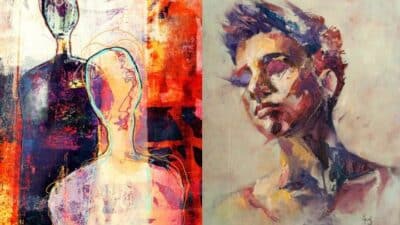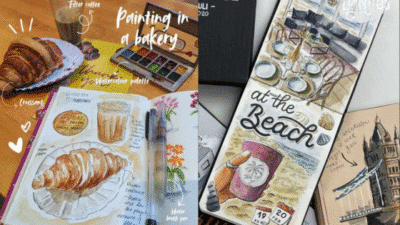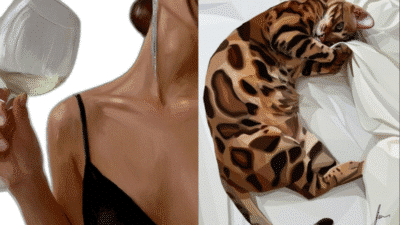When rain keeps you indoors, it’s the perfect chance to explore new drawing ideas that capture the cozy, moody, and atmospheric feeling of a rainy day. From sketching rain-speckled windows and puddle reflections to experimenting with watercolor drips and soft color blending, rainy days offer endless inspiration for your art. Drawing rainy day scenes helps you practice techniques like shading, gradients, and using mixed media to create unique and atmospheric effects.
Instead of feeling stuck inside, you can let the weather spark your creativity with subjects like umbrellas, clouds, boots, or even animated paper boats. Rainy days are an opportunity to try out new materials, play with motion in your sketches, and add lively touches to everyday scenes.
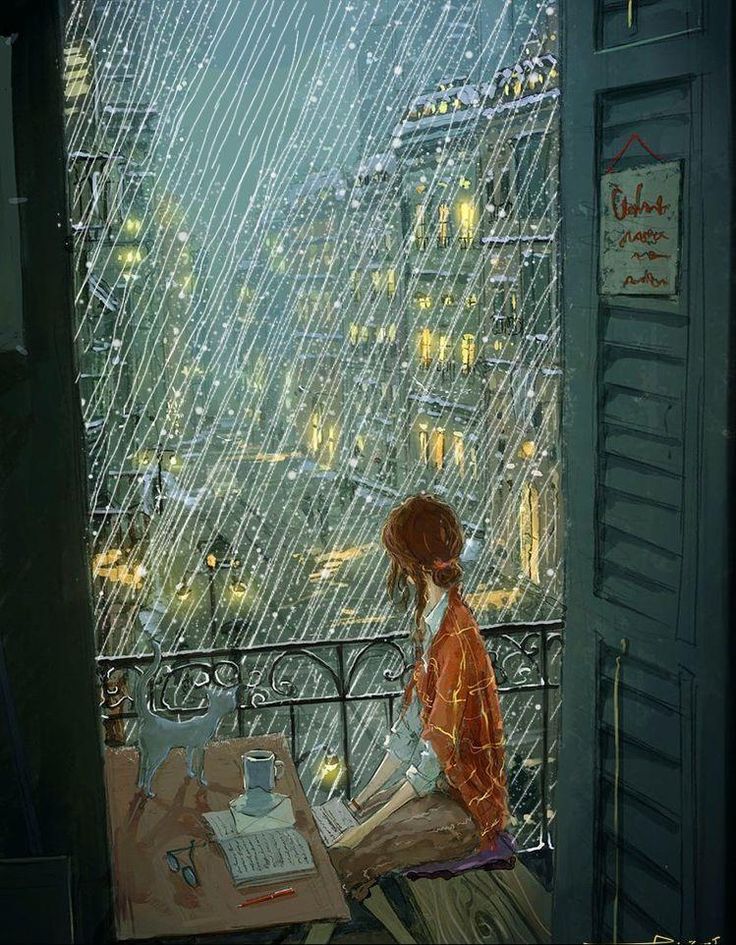
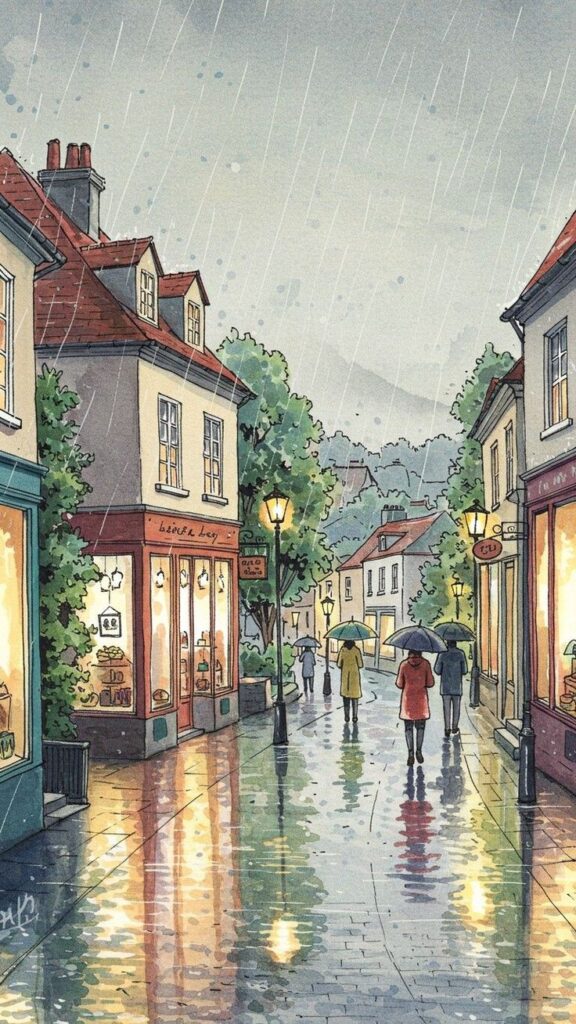
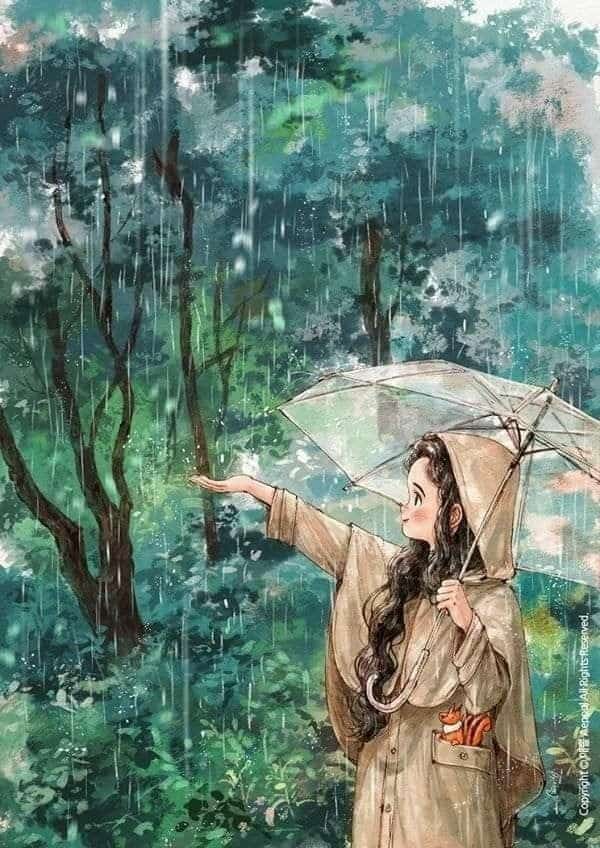
Key Takeaways
- Use rainy days as inspiration for mood-filled drawing ideas.
- Experiment with techniques and materials to add atmosphere.
- Build your sketchbook with creative, rain-themed art.
Getting Inspired by Rainy Day Scenes
Rainy days offer plenty of unique visuals to draw, from reflective water droplets to colorful umbrellas dotting gray streets. By observing how weather transforms the world around you, you can find fresh sources of inspiration that bring your art to life.
Observing Raindrops and Puddles
When you peer through a window on a wet day, you’ll notice how raindrops cling to the glass. Each droplet distorts light, creating miniature worlds with reflections and refractions.
Try sketching single drops, then experiment with groups of them running down a pane. Notice how puddles form on the ground and reflect the sky above. You might see streetlights, cars, or trees mirrored in their surfaces.
Pay attention to the shapes of splashes when raindrops hit water. Use short, curved lines and gentle shading to capture these effects. Observing these details helps you recreate the movement and atmosphere of rain more realistically.
Some quick ideas to explore in your sketchbook:
| Subject | Focus Point |
|---|---|
| Window with raindrops | Reflections, distortion |
| Pavement puddles | Surface reflections |
| Raindrop trails | Flowing motion |
Exploring Rain Clouds in the Sky
Rain clouds add drama and mood to any landscape. Watch how clouds build and shift before, during, and after a rainstorm. The sky may change from pale gray to deep charcoal, sometimes with a hint of blue peeking through.
Rain clouds often appear layered and heavy at the bottom. Use soft, wide strokes for fluffy shapes and darker tones underneath them. Sketch the gradation in the sky as the weather changes.
If you’re drawing stormy skies, try using blending techniques for a misty look. Observe the edges—clouds can be distinct, or they might blur out, affected by wind and rain. You can draw a stark divide where a shaft of rain falls from a cloud.
Clouds let you experiment with texture and contrast, key elements to atmospheric art.
Finding Beauty in Umbrellas and Rainbows
A walk outside on a rainy day will show you umbrellas in many shapes and colors. They pop brightly against muted weather, making them perfect subjects for expressive artwork.
Draw umbrellas from different angles: overhead, tilted, or seen from underneath. Detail the fabric folds and metal spokes. Group several umbrellas in a crowd for variety.
Sometimes, after the rain stops, a rainbow may appear against a receding cloud. Use soft, blending colors for realistic rainbows. Notice the way rainbows arch across the sky and how the colors fade at the edges.
Tips for drawing umbrellas and rainbows:
- Mix bold colors for umbrellas against neutral backgrounds
- Use a gentle gradient wash for rainbows
- Add small raindrops clinging to umbrella surfaces for detail
Umbrellas and rainbows both add a sense of hope and charm to rainy weather scenes, helping your drawings stand out.
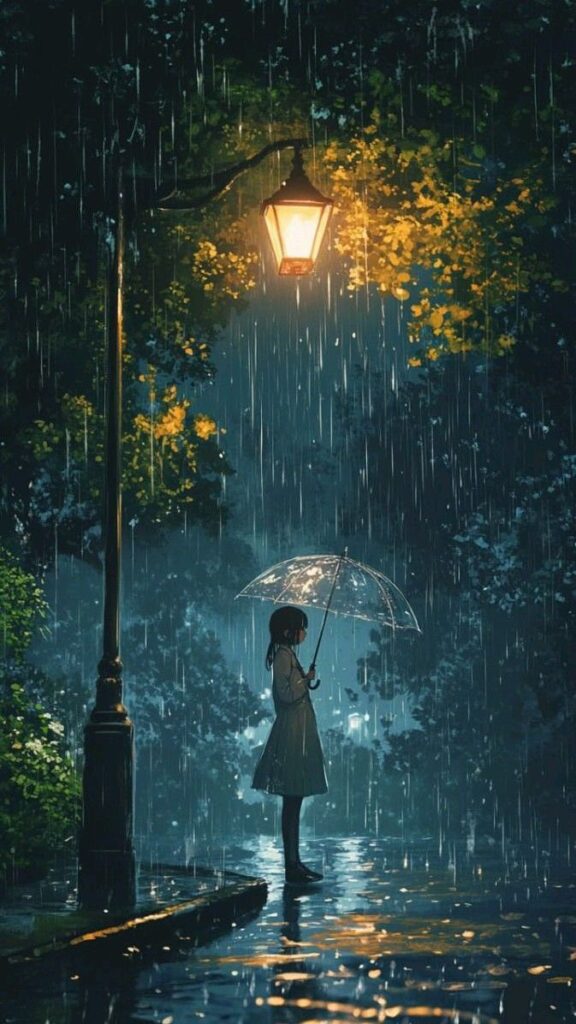
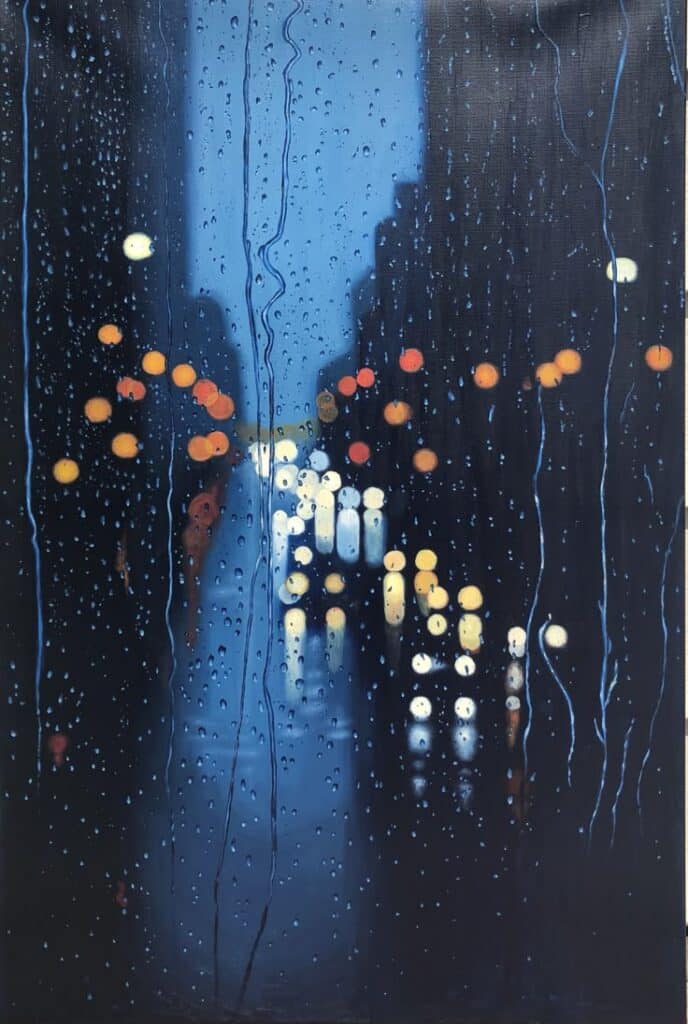
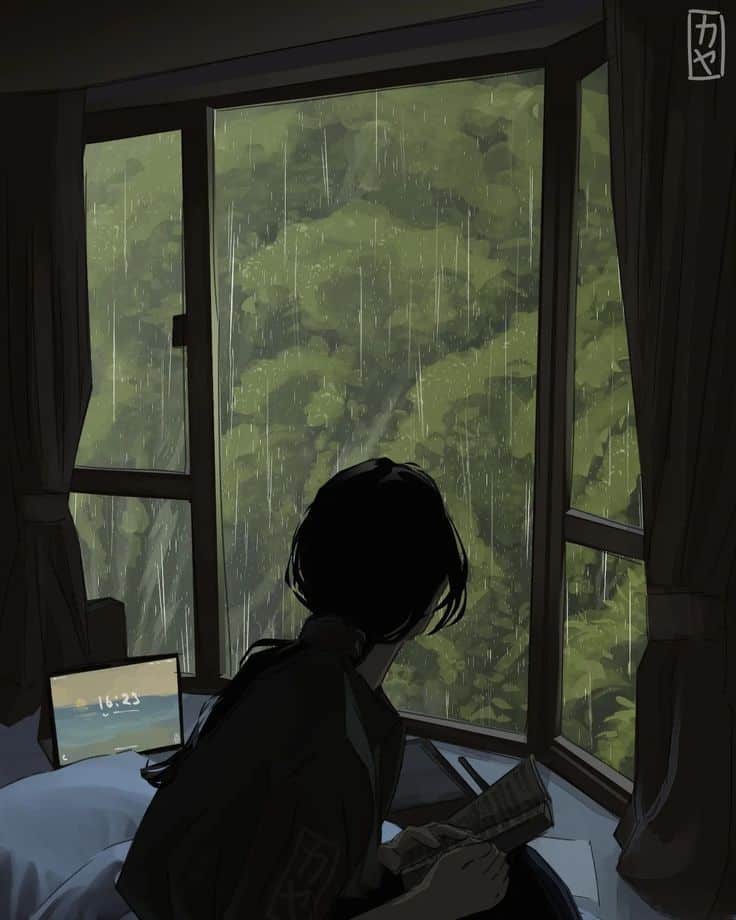
Creative Rainy Day Drawing Ideas
Stuck indoors with rain tapping at the window can inspire a range of drawing subjects that capture the cozy, moody, or dynamic atmosphere of wet weather. Using a sketchbook and a simple pencil, markers, or colored pencils, you can make the most of the rainy day experience.
Drawing Cozy Indoor Moments
A rainy day is the perfect chance to draw the warmth and comfort of home. Try sketching scenes like steaming mugs, curled-up pets, people reading by soft lamplight, or someone gazing out the window at the drizzle. Focus on how to illustrate light shining against the gloomy backdrop.
List of cozy ideas:
- Blankets and cushions on sofas or beds
- A pet nestled near a heater
- Hot drinks with steam
- Books, board games, or indoor activities
Practice giving your indoor drawings a soft, inviting feel by using gentle shading. Showing condensation on windows or the blur of rain outside helps contrast the warmth of the interior with the wetness outdoors.
Sketching Rain-Soaked Streets
Rain changes the look of everything outside. Capture slick sidewalks, glowing streetlights reflected in puddles, or people walking under colorful umbrellas. Notice how rain can soften edges and blur lines, giving your sketches a dreamy effect.
Focus on these details:
- Reflections in puddles
- Shiny cars glistening with raindrops
- Droplets running down window glass
- Crowds of people with umbrellas
Pay attention to perspective—drawing the scene from eye level, above, or even from inside looking out creates different moods. Use quick, broken lines or soft washes of color to show the movement and energy of falling rain.
Capturing Weather Conditions
To draw rain realistically, pay attention to shape and direction. Raindrops are rarely perfect circles; they often appear as short diagonal lines or tiny streaks on the page. Vary the length and thickness of these marks for a natural look.
Try these techniques:
- Use crosshatching or light smudging to show clouds
- Create layered clouds for depth
- Depict wind by angling rain and bending tree branches
- Show heavy weather by making everything darker and less distinct
Experiment with different tools—pencils for soft rain, ink for heavy storms, or watercolors for wet surfaces and atmospheric effects. Drawing different weather conditions lets you practice a range of textures and moods.
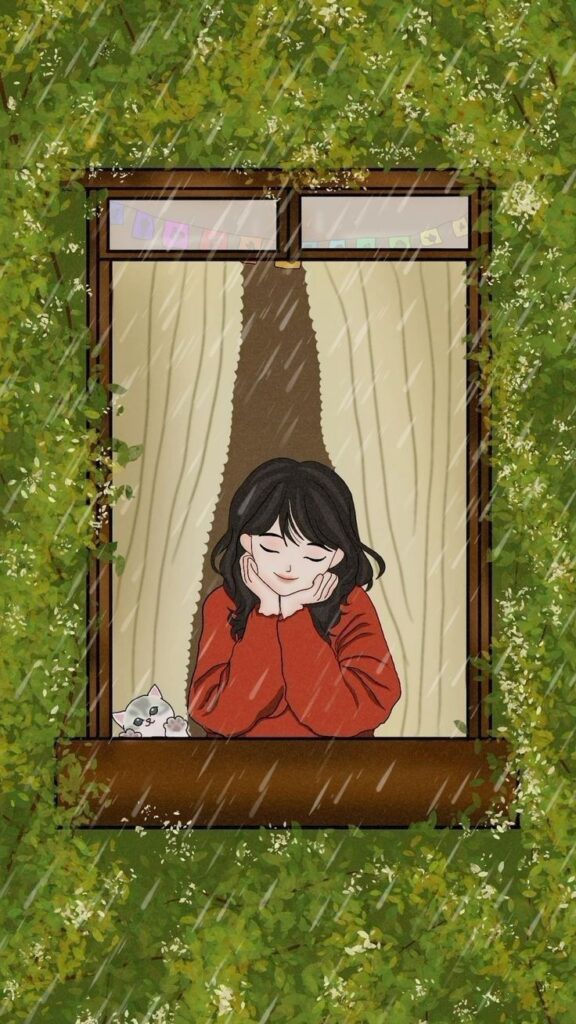
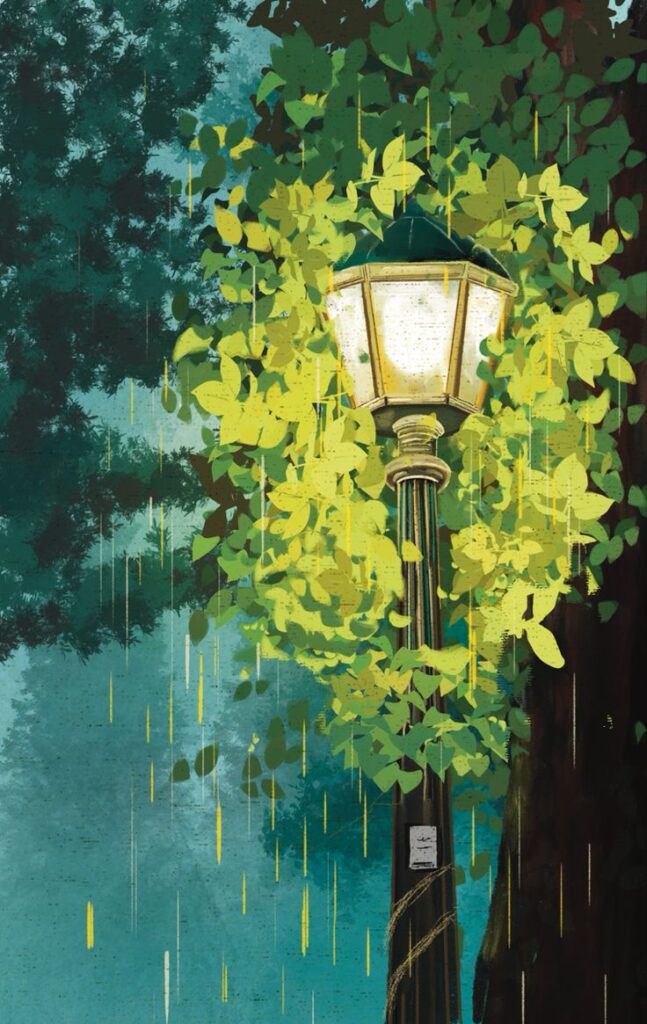
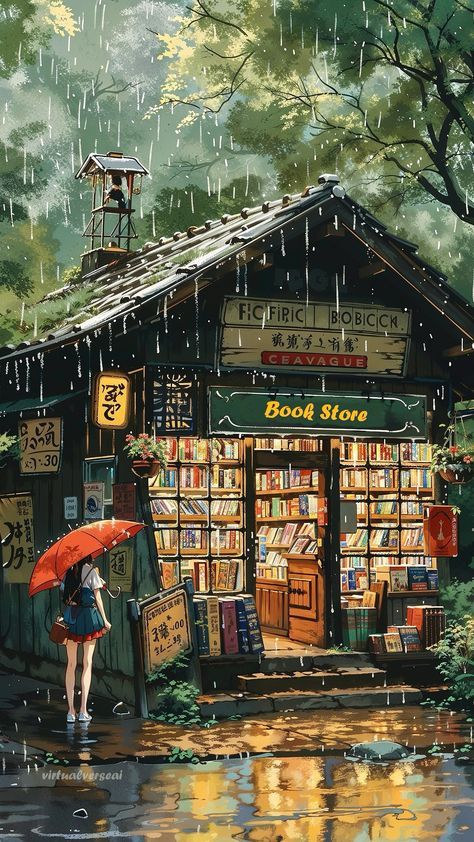
Techniques for Adding Atmosphere
Adding atmosphere to your rainy day drawings means more than just sketching clouds. Small choices in shading, textures, and materials can transform an ordinary scene into something moody and full of depth.
Using Shading and Textures
Shading is key to creating the illusion of mist, fog, or heavy rain. Use a light touch with your pencil for distant buildings or trees, leaving them lighter and less defined to suggest they’re fading into the rain. Use firm pressure or darker lines for objects in the foreground so they stand out.
Textures add visual interest that can mimic the effects of water on surfaces. Try gentle cross-hatching or stippling to represent falling rain or wet ground. Smudging graphite with your finger or a blending stump can soften edges, helping things look damp or misty.
For more realism, experiment with stamping techniques. Dab the eraser to pull out highlights, mimicking glistening raindrops or reflective puddles. Combining several shading and texturing approaches in one drawing is a practical way to suggest shifting weather conditions.
Experimenting with Markers and Watercolors
Markers and watercolors give you flexibility to create smooth washes or bold rain effects. With markers, start light and layer for subtle changes in sky color or shadow. Use the side of a marker tip to drag out streaks representing falling rain.
Watercolor is useful for its flowing, unpredictable textures. Wet the paper and drop in gray or blue paint to create spreading clouds. Tilt your paper so the paint runs downward, forming organic streaks like rain on a window.
A simple list to try with these mediums:
- Use a dry brush for rough puddle textures
- Dab with a sponge for realistic clouds
- Layer thin washes for atmospheric haze
Don’t worry if your paint or ink bleeds slightly—those imperfections often look just like wet surfaces touched by rain. Mix techniques, such as adding marker outlines over your dry watercolor washes, for stronger shapes within your stormy scene.
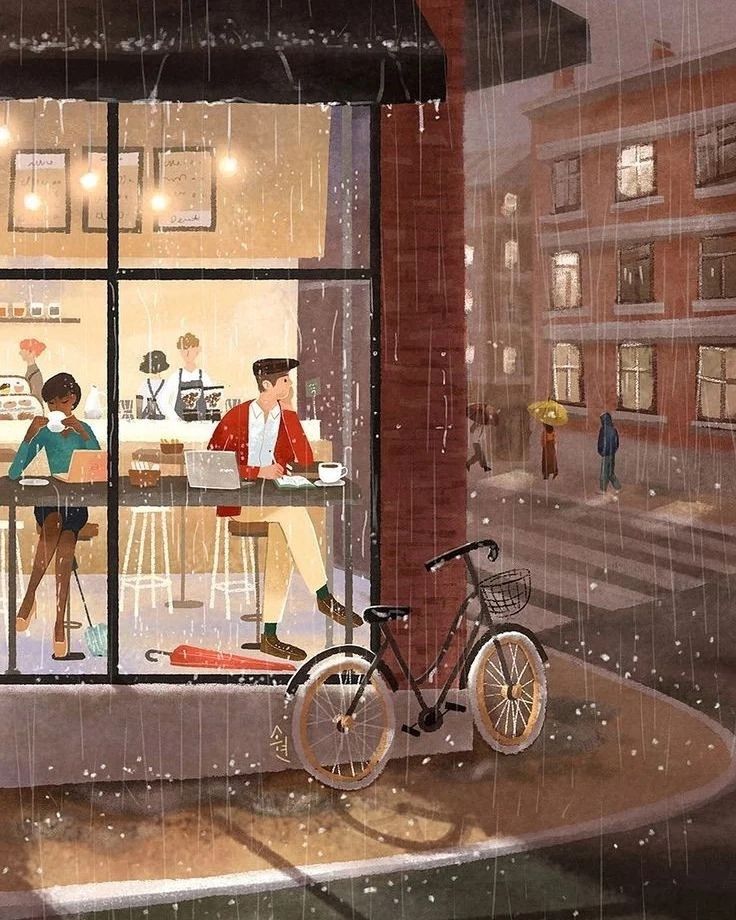
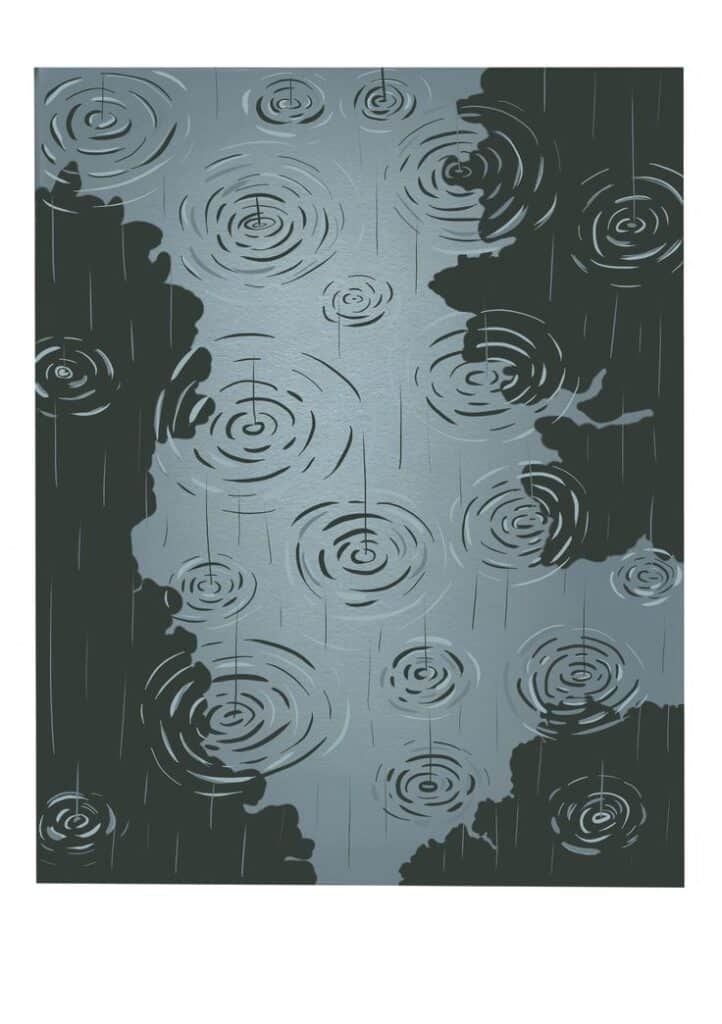
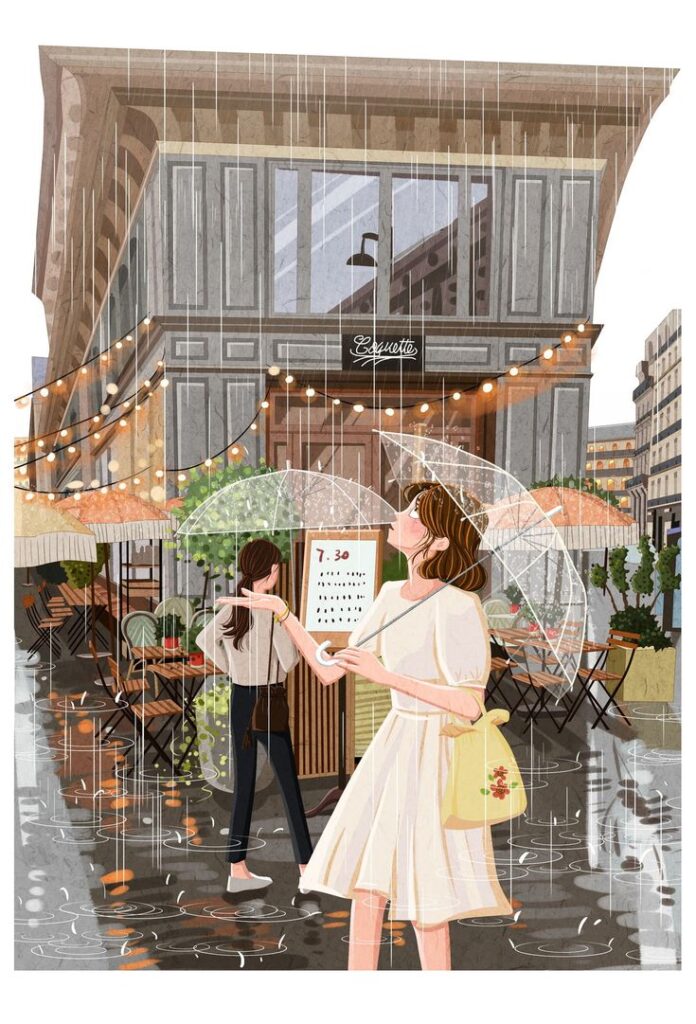
Incorporating Mixed Media and Unique Materials
On a rainy day, reaching for materials beyond the basics can make your art more engaging. Simple everyday objects—like old newspapers or packing materials—can create surprising effects and offer fresh inspiration.
Trying Paper Mache Effects
Paper mache is a classic technique that uses strips of paper and glue to build up textured layers. You can mold wet newspaper or recycled paper into raised shapes, such as raindrops or puddles, directly onto your illustration board.
Allow the paper mache to dry between layers. This ensures your finished piece is sturdy. Use acrylic paint or ink to bring out the depth in the textured areas.
Tip: Start small if you’re new to paper mache. Even adding just a few dimensional elements—like a bumpy thundercloud—can transform a flat drawing into a tactile scene.
Materials checklist:
- Shredded or torn paper
- White glue (or a flour-water mix)
- Paintbrush
- Acrylic paints
Stamping With Everyday Objects
Household items can serve as creative stampers when you’re limited on resources. For example, the cut edge of a carrot, a sponge, or even a bottle cap dipped in paint lets you stamp repeating rain patterns or swirling cloud shapes.
It’s easy to experiment with pressure, ink color, and object shape to see how each impression looks. This approach is especially useful for backgrounds, where you can layer stamped images to suggest rainfall or watery reflections.
Washable paints work best here, so you don’t damage your objects. Try mixing several shades of blue or gray to give your stamps more depth.
Ideas for stamped textures:
- Bubble shapes from bottle caps
- Raindrop patterns made with sponges
- Wavy lines using a fork tip
Exploring Bubble Wrap Prints
Bubble wrap is often thrown away, but in art it creates excellent patterns. By brushing paint lightly over the bubble side, then pressing it onto paper, you’ll get a dotted surface that can mimic falling rain or watery surfaces.
For more variation, cut the bubble wrap into different shapes, such as clouds or puddles, and use different paint colors. Layering prints can illustrate heavy rainfall or even reflections on wet streets.
Don’t forget to press gently for a clearer pattern. When you let the paint dry before adding more layers, you’ll avoid smudges and get crisp, unique textures that stand out in your mixed media scene.
Expanding Your Rainy Day Art
You can go beyond simple sketches by exploring creative ways to capture weather themes. Using different materials and techniques, you can bring rain, storms, and other atmospheric moments into your artwork.
Creating Weather-Inspired Puppets
Making puppets with a weather twist is a hands-on way to explore rainy day moods. You can craft storm cloud puppets using cotton balls or felt, and then add paper lightning bolts or string rain drops for extra effect. Simple popsicle sticks work well for handles.
Consider making a set:
- Cloud Puppets: Soft materials and blue paper for rain.
- Thunderstorm Characters: Dark fabrics, shiny foil for lightning.
- Sun After Rain: Yellow tissue paper for sunlight peeking through a cloud.
Let your puppets act out different weather scenes. Playful details like movable arms, swinging rain, or attachable paper snowflakes make them engaging and interactive.
Drawing Fog and Thunderstorm Scenes
Start by sketching a simple landscape or city street. To create fog, use a soft pencil, charcoal, or even smudge with your finger to blur the edges of buildings and trees. Layering light gray colored pencil or pastel adds gentle depth.
Focus on atmosphere:
- Fog: Smudged lines, overlapping shadows, faded elements.
- Thunderstorm: Bold, jagged lines for lightning; lots of dark shading.
- Rain: Quick, light lines slanting down from clouds; try mixing in blue or purple tones.
You can suggest movement by drawing wind-bent trees or rippling puddles. Add a glow behind the clouds for distant lightning to give your scene a sense of tension.
Adding Snowflakes and Flood Details
To draw snowflakes, start with a faint star shape, then add intricate symmetrical patterns branching from each point. Use a white gel pen or sharp colored pencil on darker paper for striking designs. Each snowflake can be unique—try adding small dots to fill empty sky.
Flooded scenes need lots of horizontal lines to suggest water. Reflections of trees, houses, and rain-soaked objects in the water give depth. Use blue and gray shades for a damp feeling.
Tips for detail:
- Flood water: Ripple effects, floating debris.
- Flooded streets: Partially submerged signs or cars.
- Snow: Layered flakes, gentle mounds on fences and roofs.
Add a mix of snowflakes or water droplets to your drawings to highlight the variety of rainy day weather. Experiment with white, blue, and silver for a more atmospheric touch.
Building Your Rainy Day Sketchbook
A rainy day sketchbook is more than just a place to doodle. It can help you track your artistic growth and give you a system for gathering inspiring scenes, color palettes, and drawing ideas that suit stormy weather.
Documenting Progress and Practice
Keeping track of your sketches will help you see how your technique improves over time. Make it a habit to date each drawing and jot down a quick note about what inspired you that day—a cozy window scene, an umbrella, or reflections on wet pavement.
Use checklists or a simple table to record what materials you tried. For example:
| Date | Subject | Tools Used | Notes |
|---|---|---|---|
| 2025-06-20 | Rainy alley | Graphite, ink pen | Tried sketching fog |
| 2025-06-23 | Puddle study | Watercolor, pencil | Practiced reflections |
Return to older pages from time to time. You’ll notice subtle changes in how you capture raindrops or express atmosphere, giving you insight on what to practice next. Challenge yourself to revisit a previous subject with new techniques learned.
Organizing Your Favorite Rainy Weather Art
Arrange your sketches so it’s easy to find your best work or specific themes. Use sticky tabs, color-coded pages, or a contents list at the front for quick reference. This helps especially if you like to draw moody clouds, dripping windowpanes, or people under umbrellas.
Create sections in your sketchbook for different drawing ideas: one for urban scenes, another for nature, or even a dedicated area for experimenting with new brush techniques. You can make a small index of your favorite art styles, rain textures, or color mixes that worked well with different weather moods.
If you enjoy using digital sketchbooks or apps, organizing is even simpler. Use folders and tags to keep all your rainy day sketches grouped by date, subject, or technique. Keeping your art stored in this way inspires you to return and add more every time a stormy day arrives.
- 912shares
- Facebook0
- Pinterest912
- Twitter0
